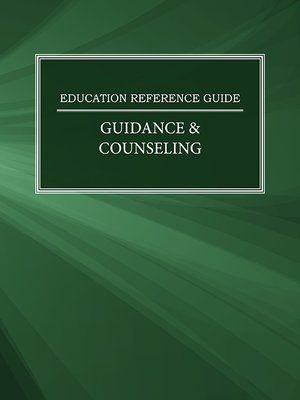
Sign up to save your library
With an OverDrive account, you can save your favorite libraries for at-a-glance information about availability. Find out more about OverDrive accounts.
Find this title in Libby, the library reading app by OverDrive.



Search for a digital library with this title
Title found at these libraries:
| Library Name | Distance |
|---|---|
| Loading... |
The first essay presents an overview of school guidance centers and the ways they differ from one school to another.
The history of school psychology in the United States can be traced back to the late nineteenth century, where it began
to play an essential role in the development of educational counseling. As Heather Zeng examines, there are many
common counseling methods and theoretical techniques that are often used in general school counseling services such
as interventions, consultations, and assessments. While counselors are required to fill a variety of roles, R.D. Merritt
suggests that there are marked “disparities [found] between the actual and ideal roles of school psychologists.” For
example, multicultural counseling programs often struggle to provide the appropriate array of services that a diverse
student population requires. As Susanna Carter stresses, these programs have a great responsibility to create a “culturally
accepting environment” school-wide. School counselors are also responsible for maintaining a positive school
environment for gay, lesbian, bisexual, transgendered, and questioning students, who often face harassment in school.
Providing respectful counseling services, advocating for the GLBTQ population, and educating students, parents, and
faculty on GLBTQ issues can help counselors create a healthy school environment. Peer counseling is one method
used to improve a school’s sense of community, create a respectful atmosphere, and supplement a school’s professional
counseling resources. Edith Arrington finishes this section with a review of the testing and evaluation process
that school psychologists and counselors often use to gauge a student’s progress and gather information for support
services and related decisions.







